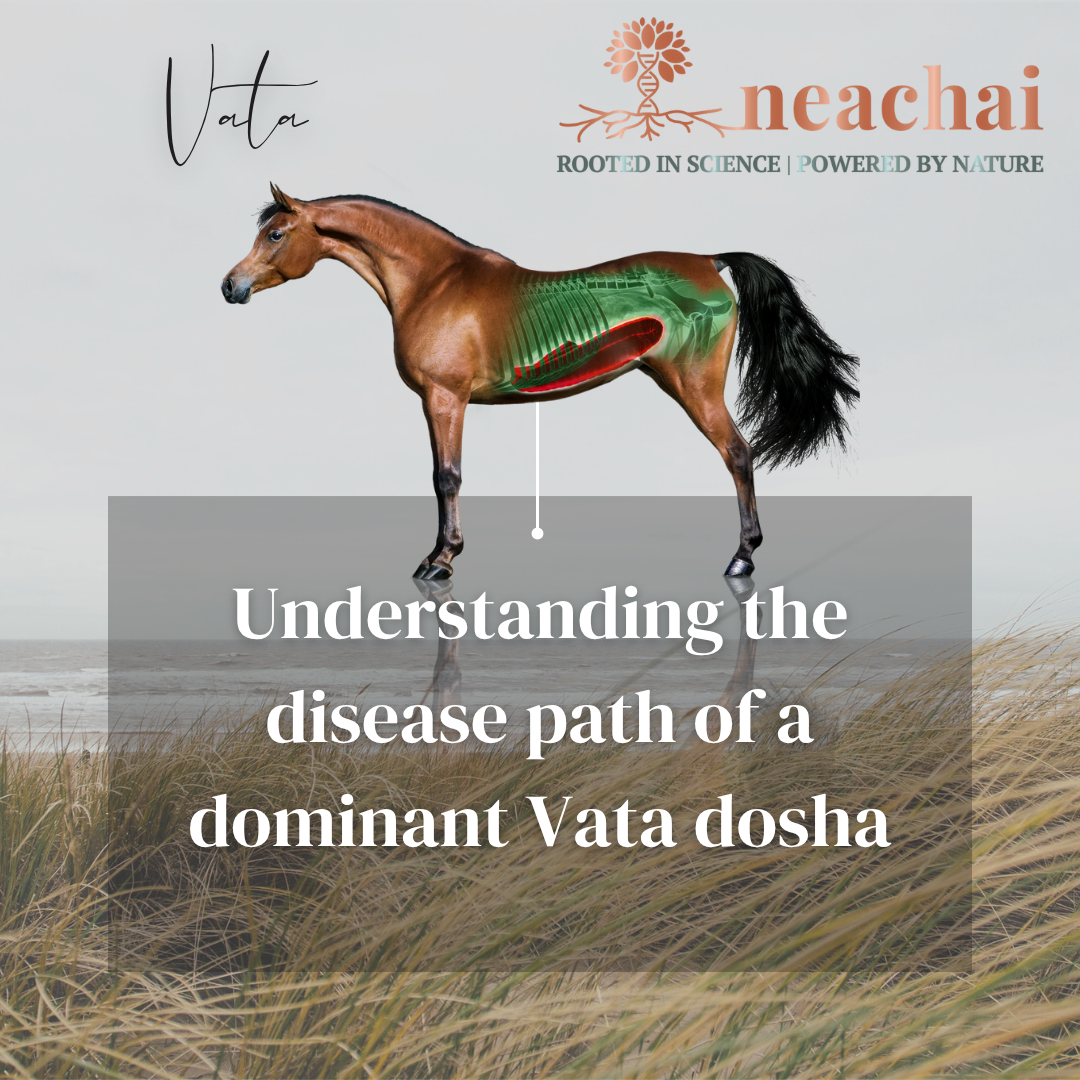By now most of you know the attributes and physical characteristics of the VATA dosha (personal genetic code) which maintains the unique psycho-physiological balance. So, lets break down the expression of the unbalanced dosha and what it will look like in your horse.
Our bodies are an intricate web of tissues, glands and channels all communicating with each other with one common goal.... achieving homeostasis (balance). The cellular structure is multifaceted and responsible for metabolizing nutrients, producing energy and replicating to build structures. All life is made up from the reproduction of cells.
In Ayurvedic Medicine, we refer to the channels within the body as srotas’, channels in the body act like paths or roadways transporting blood and sensory information, absorbing nutrients and expelling waste products from the body.
Understanding Vata Dosha in Horses: The Physiology Behind Balance and Imbalance
The Vata dosha governs all movement within your horse’s body, this includes both physical movements and essential physiological functions such as respiration, circulation, elimination, and the flow of nerve impulses. When Vata is in balance, they thrive. But when it falls out of balance, symptoms can cascade through the body, manifesting from the gut to the nervous system.
Vata in Balance in Horses (homeostasis)
A balanced Vata in horses presents as:
-
High Energy and Alertness: Your horse is lively, responsive, and curious.
-
Quick Learning Ability: Horses grasp new commands or training cues easily.
-
Clear and Attentive Mind: Focused, aware, and observant behavior.
- Stable Digestion and Elimination: Manifests in consistent manure quality and regularity.
-
Even Body Temperature and Good Circulation: Warm extremities and steady hoof health.
Vata Out of Balance in Horses
When Vata goes out of balance, signs can include:
-
Fatigue and Lethargy: Reduced energy and enthusiasm for movement or work.
-
Mental Fog or Nervousness: Spacing out, lack of focus, or seeming "on edge."
-
Irregular Digestion: Intermittent constipation, bloating, or gassiness.
-
Cold Sensitivity: Cold ears, extremities, and poor hoof circulation.
-
Emotional Distress: Skittish behavior, anxiety, or worry-like responses.
The disease pathway of Vata imbalance in horses typically begins subtly, originating in the gastrointestinal system. It starts in the large intestine, where disrupted peristalsis leads to gas, bloating, and lower abdominal distension. This can place upward pressure on the diaphragm, resulting in shallow or restricted breathing.
As Vata's mobile nature allows it to move swiftly through the body, it can enter the circulatory system and spread to the skin and heart. This phase often presents as flaky, dry skin; unexplained skin bumps; cold ears; and weakened hoof integrity, such as cracking, chipping, or flaring. If left unaddressed, the imbalance penetrates more deeply into the body's tissue layers, each step reflecting greater systemic involvement.
In the Rasa dhatu (plasma), signs of dehydration, a dull coat, and weakened mucus membranes may emerge.
When Vata reaches the Rakta dhatu (blood), circulation becomes sluggish, and horses may exhibit thicker blood and experience low-grade fevers.
As the condition progresses to the Mamsa dhatu (muscle tissue), symptoms include muscle stiffness, spasms, twitching, pain, and overall poor tone or atrophy.
In the Meda dhatu (fat tissues), dryness intensifies—skin may lose its natural oils, sweating becomes deficient, and early joint instability or even osteopenia can appear.
When Vata infiltrates the Asthi dhatu (bones), joint cracking, spinal misalignments, stifle pain, mane or tail thinning, and signs of thyroid irregularities are common.
Finally, if the imbalance reaches the Majja dhatu (nervous system), horses may show neurological symptoms such as tremors, tics, numbness, poor coordination, and spinal discomfort. This progression underscores the importance of early detection and management to restore equilibrium before deeper tissues are affected.
A comprehensive look at what your horse is eating, its lifestyle and current supplements, weighed against the symptoms present is how we determine the blend and protocol that is right for your horse.

